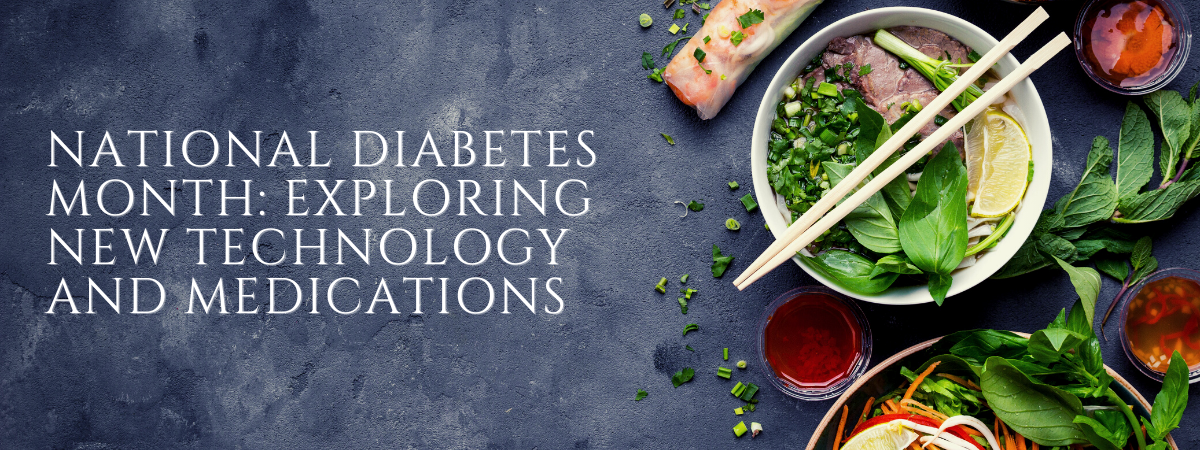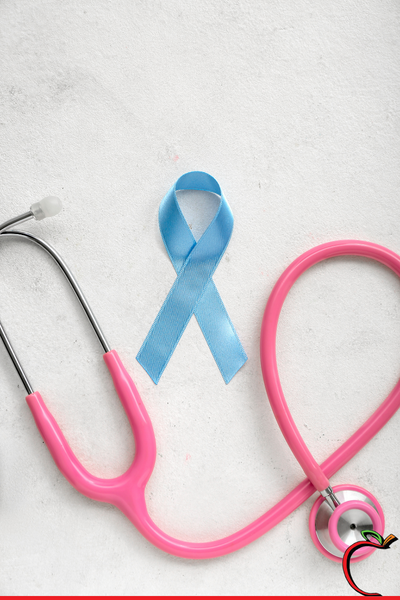What is Diabetes and How to Manage It
November is National Diabetes Month, a time to raise awareness about this chronic disease that affects over 34 million Americans, according to the Centers for Disease Control and Prevention (CDC). Diabetes is a disease that occurs when your blood glucose, also known as blood sugar, is too high. There are two main types of diabetes, type 1 and type 2, each with different causes and treatment approaches. While there is no cure for diabetes, there are many ways to manage the disease and prevent complications. In recent years, new technologies and medications have emerged that are helping people with diabetes better manage their blood sugar levels and improve their overall health.
Continuous glucose monitoring (CGM) systems are one example of a new technology that is making a significant impact in the diabetes community. CGM systems use a small sensor that is placed under the skin to continuously monitor glucose levels in real time. The sensor sends data to a receiver or smartphone app, allowing people with diabetes to see their blood sugar levels throughout the day and make informed decisions about their insulin doses, food choices, and activity levels.
In-Depth Look At New Diabetes Technologies
CGM systems are particularly helpful for people with type 1 diabetes who need to closely monitor their blood sugar levels to avoid dangerous highs and lows. They are also becoming more popular among people with type 2 diabetes who are using insulin to manage their blood sugar levels. Some CGM systems can even predict future glucose levels and alert users of potential highs or lows, allowing for proactive management of blood sugar levels.
Another new technology that is changing the diabetes landscape is automated insulin delivery systems, also known as closed-loop systems or artificial pancreas systems. These systems use a combination of CGM data and insulin delivery algorithms to automatically adjust insulin doses based on the user’s blood sugar levels. The system consists of a CGM sensor, an insulin pump, and a control algorithm that calculates insulin doses in real-time. Automated insulin delivery systems are particularly helpful for people with type 1 diabetes who have difficulty managing their blood sugar levels, especially at night when they are asleep. The system can adjust insulin doses throughout the night, reducing the risk of dangerously low blood sugar levels or hypoglycemia.
Diabetes Medications That Can Help
In addition to new technologies, there are also new medications that are helping people with diabetes better manage their blood sugar levels. One example is GLP-1 receptor agonists, a type of injectable medication that works by mimicking the effects of a hormone called glucagon-like peptide-1 (GLP-1).

How GLP-1 Receptor Agonists Aid In Blood Sugar Management
GLP-1 receptor agonists work by stimulating insulin secretion, reducing glucagon secretion, and slowing gastric emptying, all of which help to lower blood sugar levels. GLP-1 receptor agonists are particularly helpful for people with type 2 diabetes who are struggling to control their blood sugar levels despite making lifestyle changes and taking other medications. They are often used in combination with other diabetes medications, including metformin, a medication that helps to reduce the amount of glucose produced by the liver.
These new developments are not a cure for diabetes and that ongoing management and lifestyle changes are still necessary.
SGLT-2 inhibitors For Reducing Blood Sugar Levels
Another new medication that is making a significant impact in the diabetes community is SGLT-2 inhibitors. SGLT-2 inhibitors work by blocking the reabsorption of glucose in the kidneys, allowing excess glucose to be excreted in the urine. This leads to a reduction in blood sugar levels and can also help to lower blood pressure and promote weight loss. SGLT-2 inhibitors are particularly helpful for people with type 2 diabetes who are overweight or obese and struggling to manage their blood sugar levels with lifestyle changes and other medications. They are often used in combination with other diabetes medications, including metformin and GLP-1 receptor agonists. While new technologies and medications are helping people with diabetes better manage their blood sugar levels, it is important to remember that there is no one-size-fits-all approach to diabetes management
In conclusion, National Diabetes Month is an important time to raise awareness about diabetes and promote the latest advancements in technology and medications for managing the disease. However, it is important to remember that these new developments are not a cure for diabetes and that ongoing management and lifestyle changes are still necessary. Quality healthcare and community support are also essential for managing diabetes and improving the quality of life for people with this condition.

Gunja Parikh
MS, RD, LDN
Gunja is a licensed and registered dietitian with a passion for helping individuals improve their eating habits to reach their nutrition goals… READ MORE
- Managing diabetes – NIDDK (no date) National Institute of Diabetes and Digestive and Kidney Diseases. Available at: https://www.niddk.nih.gov/health-information/diabetes/overview/managing-diabetes#bloodGlucose (Accessed: 06 September 2023).
- Devices & Technology | ADA. Accessed September 6, 2023. https://diabetes.org/about-diabetes/devices-technology.
- Weinstock RS, Aleppo G, Bailey TS, et al. The Role of Blood Glucose Monitoring in Diabetes Management. Arlington (VA): American Diabetes Association; 2020 Oct. Available from: https://www.ncbi.nlm.nih.gov/books/NBK566165/ doi: 10.2337/db2020-31


